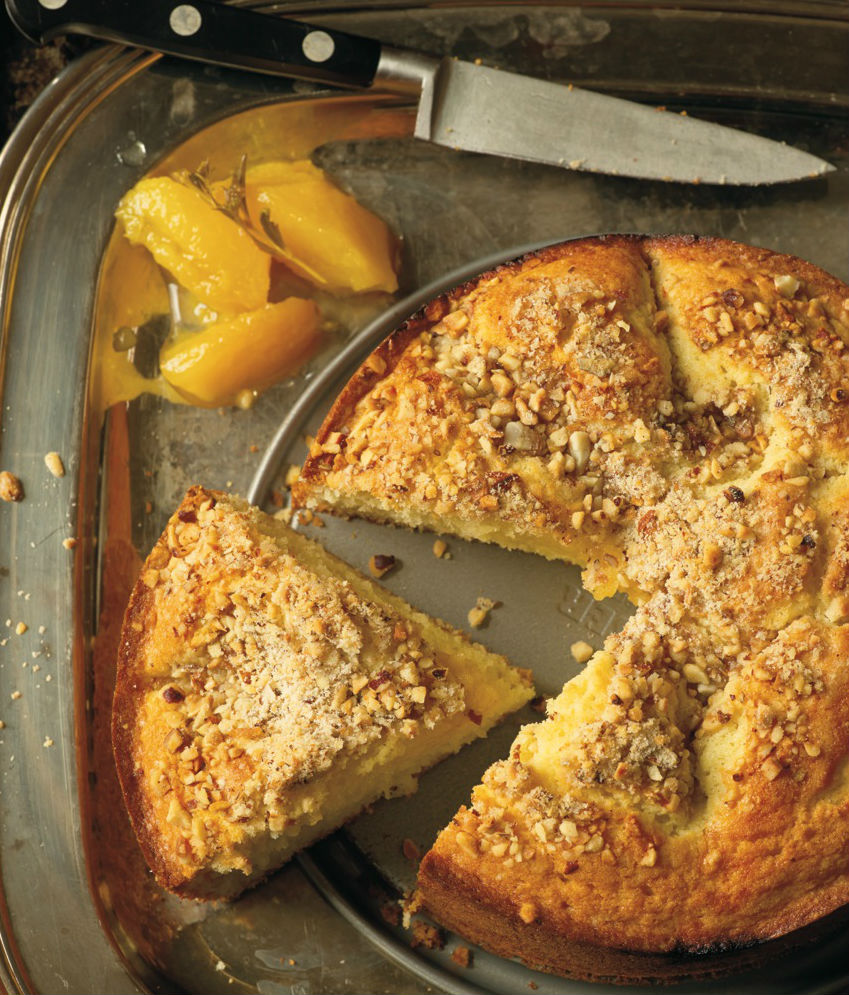
Food writer Eugenia Bone says your first instinct should not be to throw away your food scraps. Bone, who splits her time between Crawford, Colo., and New York, says these leftovers can improve the flavors in your cooking in her latest book, "The Kitchen Ecosystem."
Bone spoke with Colorado Matters host Ryan Warner.
Try a recipe from "The Kitchen Ecosystem"
Bone suggests three ways to approach ingredients in your cooking: make dishes with fresh ingredients, preserve foods when you can to use later, and save parts you normally throw away -- such as peels, pits, and bones -- to boost flavor in your cuisine. Below is an example of this using peaches.
Reprinted from "The Kitchen Ecosystem" by Eugenia Bone with permission of Clarkson Potter/Publishers New York. Copyright (c) Eugenia Bone, 2014.
Make fresh

Peach and Tomato Salad
Serves four.
There is nothing better at the height of summer than this room-temperature salad. Use slicing tomatoes and peaches that have not been refrigerated for the best flavor.
4 cups tomato wedges
3 cups peach wedges
1 cup sliced onion (sweet or red are best)
3 to 4 tablespoons extra virgin olive oil
1 to 2 tablespoons white wine vinegar, champagne vinegar, or fruit vinegar
Salt and freshly ground black pepper
2 tablespoons chopped cilantro, for garnish
In a serving bowl, gently combine the tomatoes, peaches, onion, olive oil, vinegar, and salt and pepper to taste. You may want to adjust the olive oil and vinegar ratio to your taste. Garnish with the cilantro.
Preserve for later

Peaches with Thyme and Moscato Wine
There are many uses for canned peaches. I drain them and make a free form galette, or pour them into a skillet and top with puff pastry, bake, then flip over to make a quick tart, or peach buckle. And save that leftover syrup to flavor teas and cocktails, or add to poached fruits. It’s pure peachy gold. This recipe is [also] a great way to use leftover sweet wine from a dinner party.
1 1/2 tablespoons ascorbic acid
2 pounds peaches
1 cup sugar
1 cup water
3/4 cup Moscato or other sweet wine
6 springs of fresh thyme
3 strips (2 inches long) lemon zest
To retain the peaches' color, combine the ascorbic acid with 4 cups water. Stir to dissolve.
Bring a large pot of water to a boil. Add the peaches, count off 30 seconds, and then remove. The peels should slide off. Halve and pit the peaches. Slice the peaches (or cut them into chunks if you prefer) and drop them into the ascorbic acid dip. Let rest for about 5 minutes. Drain.
Meanwhile, in a large saucepan, combine the sugar and the water and bring to a boil over medium heat. Add the drained peaches to the hot syrup and bring to a boil again. Take the peaches off the heat.
Have ready 3 clean pint jars and bands, and new lids that have been simmered in hot water to soften the rubberized flange. Fish the peaches out of the syrup and place them in the jars. Add 1/4 cup Moscato, 2 thyme sprigs, and a piece of lemon zest to each jar. If the Moscato doesn't cover the peaches, add some of the syrup from the saucepan, but leave 1/2 inch of headroom. Remove any air bubbles by inserting a butter knife into the jar. Wipe the rims, place on the the lids, and screw on the bands fingertip tight.
Process the jars in water bath for 20 minutes. Be sure to make altitude adjustments when preserving. There may be discoloring of the fruit at the top of the jar over time. It's okay.
Use your food scraps

Peach Pit Jelly
Makes 2 half-pints
One of the great perks of writing recipes is connecting with like-minded fellow cooks. This recipe comes from one such lovely person, Ginger Saylor, and it is a winner. Peach pit jelly has a kind of furry quality, very homey and bed and breaskfasty. This jelly calls for pectin. I use Pomona’s Universal Pectin. The processing time for this jelly comes from The Ball Complete Book of Home Preserving. You can also make pear peel jelly. The recipe is identical. Just substitute the peach pits and peels with the peels of any variety of pears.
4 cups peach peelings and pits
About 6 cups water
1 tablespoon lemon juice
2 teaspoons calcium water (included in the Pomona’s package)
2 cups sugar
2 ½ teaspoons pectin
Place the peach peelings and pits in a large pot and cover with the water. Bring to a low boil over a medium-low heat, cover, and cook for about 30 minutes.
Remove from the heat and pour the peelings and water into a bowl. Place in the fridge overnight or up to 3 days. (This step intensifies the flavor, but it’s okay to skip it.)
Arrange a jelly bag or a sieve lined with two layers of cheesecloth over a deep pot. Wet the bag or cheesecloth so it doesn’t absorb any of the juice. Ladle the peelings and their water into the jelly bag and allow the juice drip through into the bowl. You aren’t supposed to squeeze the jelly bag because it can make the jelly cloudy, but I do a little pressing anyway, to speed the process up, and have never had a problem.
In a large saucepan, combine the peach juice, lemon juice, and calcium water. Bring to a boil over a medium heat.
In a bowl, combine the sugar and pectin very well. Add to the boiling juice. Allow the mixture to return to a boil, and cook, stirring, until the sugar has dissolved.
Have ready 2 clean half-pint jars and bands, and new lids that have been simmered in hot water to soften the rubberized flange. Pour the jelly into the jars leaving ½ inch headroom. Wipe the rims, place on the lids, and screw on the bands fingertip tight.
Process the jars in a water bath for 10 minutes at sea level. Process the jars for an addition 1 minute for every 1,000 feet above sea level. Remove from water, let the jars rest 24 hours, and then check the seals. Store in a cool dark place for up to a year.









